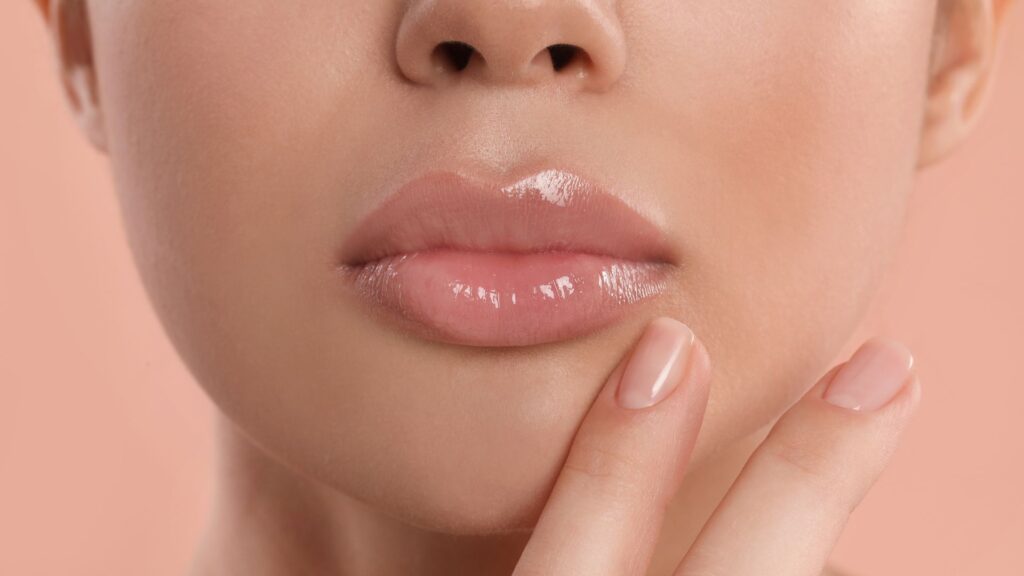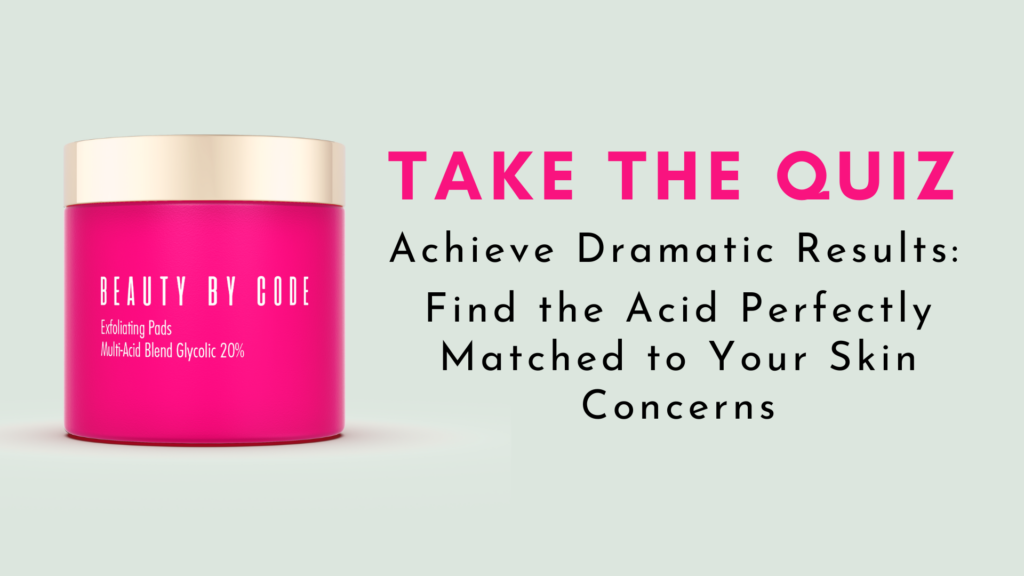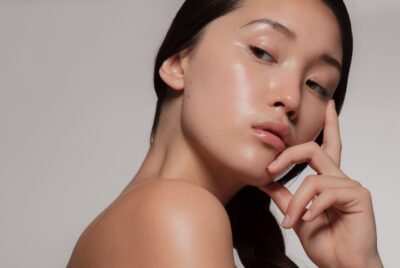Skin Cycling: The Routine That Will Change Your Skin Forever
Have you tried endless skincare products but still struggle with dull, lackluster skin that never seems to glow, no matter what you do?
Skin cycling could be the solution you’ve been searching for, offering relief and a path to healthier, happier skin.
Understanding Skin Cycling
Let’s talk about skin cycling—think of it as your skin’s new favorite workout routine but without sweaty gym clothes and, well, it’s for your face.
Imagine your skincare routine like a well-balanced diet. You wouldn’t eat pizza every day, right? (Maybe we’d like to, but our bodies would protest.) The same concept applies to your skin!
Skin cycling is all about giving your skin the right “nutrition” at the right time, rotating through different products to keep your complexion in tip-top shape without overwhelming it.
What is Skin Cycling?
Skin cycling is a strategic approach to skincare that involves rotating active ingredients—like exfoliants, retinoids, and moisturizers—on a set schedule to optimize your skin’s health and appearance.
It’s like planning out a week’s worth of meals where each day brings something new and beneficial to the table.
The idea is to avoid overloading your skin with too many active ingredients all at once, which can lead to irritation, dryness, or that dreaded flaky skin.
Instead, skin cycling gives your skin time to rest and repair between active treatments, helping you achieve that coveted glow.
The Science Behind Skin Cycling
So, why does skin cycling work so well? Let’s dive into a bit of skin science.
Your skin is a complex organ (yes, organ!) that undergoes a natural process of renewal. Your skin cells turn over every 28 to 40 days, meaning new ones are born while the old ones slough off.
This process slows down as we age, which is why we start to see fine lines, uneven texture, and dullness.
Here’s where skin cycling comes into play👌
By alternating between exfoliation, active treatments like retinoids, and recovery, you’re helping your skin maintain a balanced renewal process.
Exfoliation speeds up cell turnover by removing dead skin cells, making way for fresh ones.
Retinoids stimulate collagen production and accelerate cell turnover, tackling wrinkles and dark spots.
But—and here’s the key—without recovery days, your skin might get too much of a good thing, leading to irritation instead of improvement.
A Little History Lesson
While skin cycling might sound like the latest TikTok trend, it actually has roots in dermatology.
Dermatologists have long recommended rotating products to avoid overwhelming the skin.
The difference now is that this method has been fine-tuned into an easy-to-follow routine that anyone can implement. It’s backed by research, too—studies have shown that skin barrier function improves when the skin is given regular breaks from strong active ingredients.
So, why does this matter?
Because your skin isn’t just there to look pretty; it’s your first line of defense against the world. Keeping it healthy and balanced is crucial not just for aesthetics but for your overall well-being.
The Benefits of Skin Cycling
So, why should you hop on the skin cycling bandwagon?
[Benefit 1] Improved Skin Health
First and foremost, skin cycling is all about maintaining a balanced skin barrier, which is your skin’s first line of defense against the outside world.
Think of your skin barrier as a brick wall—the cells are the bricks, and the lipids (fats) are the mortar holding it all together.
When you bombard your skin with too many harsh products, that wall starts to weaken, leading to dryness, sensitivity, and irritation.
By incorporating rest days into your routine, skin cycling allows your skin to recover and rebuild that all-important barrier.
The result? A more resilient, healthier complexion that’s better equipped to handle environmental stressors and daily wear and tear.
And let’s not forget those common skin issues like acne, dryness, and sensitivity. Skin cycling can be a real lifesaver here.
By alternating active ingredients, you’re less likely to overload your skin, which means fewer flare-ups, less irritation, and more consistent results.
Over time, this approach doesn’t just address immediate concerns—it promotes long-term skin health.
Your skin learns to function optimally, renewing itself without the need for constant intervention. Essentially, you’re training your skin to work smarter, not harder.
[Benefit 2] Optimized Product Efficacy
Now, let’s talk about getting the most bang for your buck with your skincare products.
One of the biggest frustrations in skincare is the dreaded plateau when a product stops working as well as it did in the beginning.
It’s like your skin has built up a tolerance, and suddenly, that miracle serum feels more like a waste of time and money.
Skin cycling helps prevent this by rotating active ingredients in a way that keeps your skin on its toes.
When you give your skin a break from certain ingredients, it doesn’t get the chance to adapt and become less responsive.
This means that when you do reintroduce those actives, they’re more effective, delivering the results you want without the need for stronger (and potentially more irritating) products.
Think of it as a workout for your skin—by varying your routine, you’re challenging your skin in new ways, ensuring it continues to respond and improve. You’re also avoiding the pitfall of overuse, which can lead to diminished results or, worse, skin damage.
Strategic usage is the name of the game here.
With skin cycling, you’re using each product at its most effective time, whether it’s exfoliating on a night when your skin needs renewal or applying retinoids when your skin is ready to absorb and utilize them best. It’s not just about using products—it’s about using them wisely.
[Benefit 3] Customization and Adaptability
One of the standout benefits of skin cycling is how adaptable it is.
No two skins are alike, and your routine should reflect that. Whether you have dry, oily, combination, or sensitive skin, skin cycling can be tailored to fit your unique needs.
For example, if your skin tends to be on the sensitive side, you might opt for gentler exfoliants and a longer recovery period.
If your skin can handle more intense treatments, you can adjust the cycle to include more frequent active nights.
The beauty of skin cycling is that it’s not one-size-fits-all—it’s a flexible framework that you can customize to meet your skin’s current state.
And here’s the kicker: your skin’s needs change with the seasons, your environment, and even your lifestyle.
What works in the humid summer months might not cut it in the dry winter air.
Skin cycling allows you to adapt your routine as needed, ensuring your skin gets exactly what it needs, when it needs it.
As you age, you can tweak the cycle to focus more on anti-aging treatments or hydration, making it a routine that evolves with you.
Implementing Skin Cycling in Your Routine
Now that you’re sold on the benefits of skin cycling, it’s time to dive into how to actually implement this routine.
Whether you’re a skincare newbie or a seasoned pro, this guide will walk you through the steps, tips, and potential pitfalls to help you get the most out of skin cycling.
Step-by-Step Guide to Skin Cycling
Let’s break down a basic skin cycling routine tailored to different skin types. Remember, this is a starting point—you can (and should) tweak it to fit your skin’s specific needs.
Night 1: Exfoliation
Exfoliation is the first step in skin cycling, designed to slough off dead skin cells and prep your skin for the active ingredients that follow.
Depending on your skin type, you’ll want to choose the right exfoliant:
For Dry or Sensitive Skin: Opt for a gentle chemical exfoliant like lactic acid or mandelic acid. These ingredients exfoliate without stripping your skin of its natural moisture.
Product recs:
- Sunday Riley Good Genes All-In-One Lactic Acid Treatment OR
- Biossance Squalane + Lactic Acid Resurfacing Night Serum
For Oily or Acne-Prone Skin: Salicylic acid is your go-to. It penetrates deep into pores to clear out excess oil and reduce breakouts.
Product recs:
For Combination Skin: A balanced formula with both AHA and BHA can address multiple concerns without overdoing it.
Product recommendation:
Night 2: Retinoid Application
Retinoids are the powerhouse of skin cycling, working to increase cell turnover, reduce fine lines, and even out skin tone.
👉 [Before I forget: Always apply retinoids on dry skin!]
Now, the type and strength of retinoid you use will depend on your skin’s tolerance:
For Dry or Sensitive Skin: Start with a low-strength retinoid like retinol or bakuchiol, a gentler plant-based alternative to the skin.
Product recs:
For Oily or Acne-Prone Skin: You can opt for a stronger retinoid, like adapalene, which is often used to treat acne.
Product recommendation:
For Combination Skin: A mid-strength retinol that balances effectiveness with tolerability is ideal. Product recommendation:
Nights 3 & 4: Recovery
These are your skin’s rest days, where you focus on hydration and barrier repair. The goal is to replenish moisture and support the skin’s natural barrier:
For Dry or Sensitive Skin: Use a rich moisturizer with ceramides and hyaluronic acid to deeply hydrate and restore.
Product recommendation:
For Oily or Acne-Prone Skin: Go for a lightweight, non-comedogenic moisturizer that won’t clog pores. Look for ingredients like niacinamide, which helps balance oil production.
Product recommendation:
- Caudalie Sorbet is made for sensitive skin but it’s a great choice for oily and acne-prone skin because it’s super light, hence the name: Sorbet!
- Looking to stop the shine? Pai’s mattifying moisturizer is what you’re looking for.
- Another option if you really want to nourish your oily skin is Osea Seabiotic water cream.
For Combination Skin: A balanced moisturizer with both hydrating and soothing ingredients works best.
Product recommendation:
During these recovery nights, you can also incorporate a soothing serum or oil if your skin needs extra nourishment. Consider products with squalane, oat extract, or aloe vera for an added layer of comfort.
Tips for Beginners: How to Start Slowly and Build Up Tolerance
If you’re new to skin cycling, it’s crucial to start slowly to avoid overwhelming your skin:
*Ease Into It: Begin with just one cycle per week. As your skin adjusts, you can gradually increase to two or three cycles. Pay close attention to how your skin reacts—if you notice irritation, scale back.
*Patch Test First: Before incorporating new products, do a patch test on a small area of your skin to ensure you don’t have an adverse reaction.
*Listen to Your Skin: If your skin feels overly dry, irritated, or sensitive, don’t hesitate to extend the recovery phase or skip a night of actives. Skin cycling is about balance, not a rigid schedule.
Common Mistakes and How to Avoid Them
Even with the best intentions, it’s easy to slip up. Here’s how to avoid the most common skin cycling mistakes:
-Over-exfoliation: If your skin starts to feel tight, dry, or looks red and inflamed, you might be over-exfoliating. Signs include increased sensitivity and flaky skin. To fix this, reduce the frequency of exfoliation and switch to a gentler formula if needed.
-Misuse of Products: Applying products in the wrong order or at the wrong time can reduce their effectiveness or even cause irritation.
Always apply actives like retinoids after cleansing and before moisturizing. Recovery products should be applied on clean skin during the recovery phase.
-Inadequate Recovery: Don’t skimp on recovery nights. These are essential for maintaining your skin’s health and ensuring it can handle active ingredients. Make sure you’re using products that deeply hydrate and support the skin barrier, like those containing ceramides, peptides, or hyaluronic acid.
Long-Term Skin Cycling Strategy
Once your skin has acclimated to the routine, it’s important to keep evolving your approach to meet your skin’s changing needs:
-Adjusting the Routine Over Time: As your skin becomes more tolerant to actives, you can experiment with stronger formulations or shorter recovery periods. On the other hand, if your skin becomes more sensitive, extend the recovery phase or switch to milder actives.
-Monitoring Results: Keep an eye on how your skin responds over time. Are you seeing improvements in texture, tone, and clarity?
If not, consider tweaking the products or frequency of your cycle. Sometimes, less is more—don’t feel pressured to add more steps or stronger products if your skin is thriving.
-Incorporating Additional Treatments: As your skin adapts, you might want to include additional treatments like vitamin C serums on non-active nights or occasional hydrating masks during the recovery phase.
The key is to introduce these gradually and see how they fit into your overall routine.
Frequently Asked Questions (FAQs)
1. Can I use other active ingredients like vitamin C during my skin cycling routine?
Yes, you can incorporate vitamin C or other antioxidants into your skin cycling routine, but it’s best to use them on non-active nights, like during your recovery phase.
Vitamin C is great for brightening the skin and protecting it from environmental damage, so using it in the morning after your recovery night can be particularly effective. Just be sure to introduce it gradually to avoid overwhelming your skin.
2. How long does it take to see results with skin cycling?
Results can vary depending on your skin type and the specific concerns you’re addressing. However, most people start to notice improvements in skin texture, clarity, and overall health within 4 to 6 weeks of consistent skin cycling. Remember, skincare is a marathon, not a sprint—patience and consistency are key to seeing long-term benefits.
3. What if my skin becomes irritated or breaks out during skin cycling?
If you experience irritation or breakouts, it’s likely your skin needs more time to adjust or may require a gentler approach.
Extend the recovery phase by adding extra non-active nights, or switch to milder formulations of your exfoliants and retinoids.
It’s important to listen to your skin and adjust the routine as needed. If irritation persists, consider consulting a dermatologist for personalized advice.
4. Can I use skin cycling if I have sensitive skin?
Absolutely! Skin cycling can be especially beneficial for sensitive skin because it allows for rest days, giving your skin time to repair and strengthen its barrier.
Start with the gentlest exfoliants and retinoids, and ensure your recovery days are packed with hydrating and soothing products.
You might also extend the recovery phase, using two or three nights of recovery instead of just one, to keep your skin calm and balanced.
5. Do I need to use expensive products for skin cycling to be effective?
Not at all. While there are many luxury skincare products available, effective skin cycling can be achieved with affordable products as well.
The key is to choose products with the right active ingredients for your skin type and concerns. There are plenty of budget-friendly options that work just as well as high-end brands.
The most important factor is consistency and choosing the products that your skin responds to best.
[Natural Beauty Hub earn commissions from the links on this page, but I only ever share with you brands and products that I trust]









